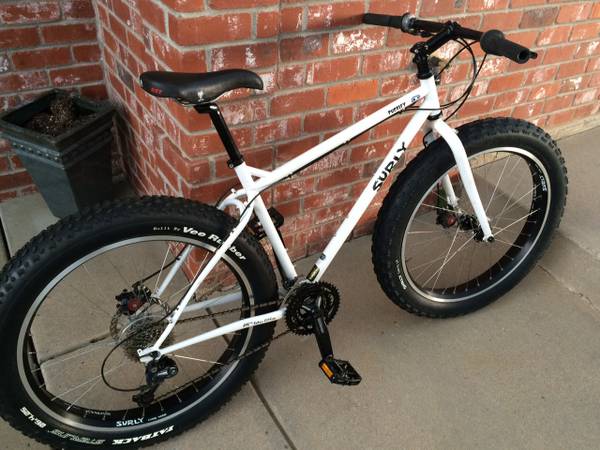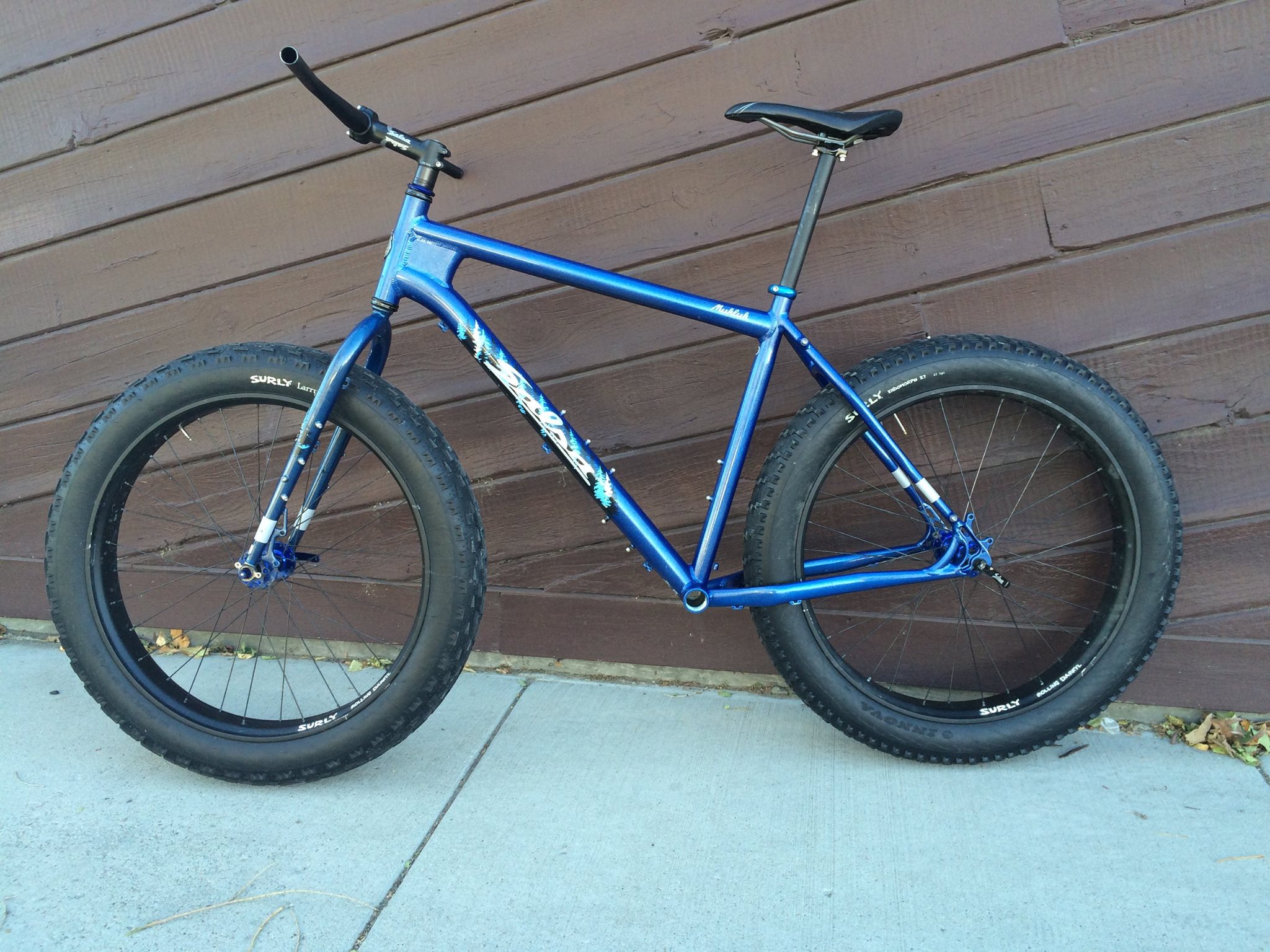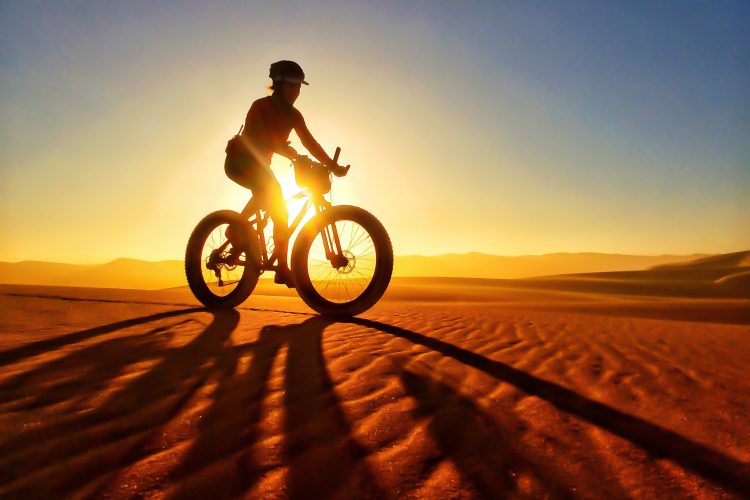Many of us count ourselves fortunate to be able to afford just one decent bike in our garage. Usually, that bike is not a fat bike. More and more riders, however, are hoping to get into fat biking, which often has to be done on a budget. Most of the riders that I’ve talked to in the past few months have a budget of around $1,000, and they want to get the best possible bike they can afford.
Last year, Greg updated Corey’s article about new budget fat bikes, and I recently wrote this article about how to buy a used bike online. Fortunately, since the fat bike market exploded this past year, there are more and more fat bikes to be had at good used prices. How will you determine how to get the best bang for your buck?
[see_also id=”37573″][/see_also]
Where to Look
Most of us are familiar with Ebay and Craigslist, but some of the best deals can be found on Facebook trade sites like Fat Bike Trader, or local trader groups such as “[Your City] Bike Swap.” One advantage of using sites like these is that people generally are very rider-centric and trustworthy, unlike dealing with complete strangers on sites like Ebay who may not even ride bikes. Moreover, these sellers seem to have a really good idea of what bikes and parts are worth, and often are willing to cut you a good deal if not an outright trade. So, if you have an extra bike laying around that you are not using, and want to trade for a fatty, you might have some luck on a site like Fat Bike Trader.
Bike Brands/Frame

Not knocking any specific manufacturer, but most people I talk to seem to be interested in a handful of brands at this price point: Salsa Mukluk, Specialized Fatboy, Surly Pugsley, Framed Minnesota, and a few others. At $1,000, you’re probably not going to score a carbon Beargrease or Whiteout, but the good news is that you don’t have to. There is nothing wrong with aluminum or steel, and the frame is not where you want to sink the majority of your money on a budget. Certain components, like tires and fork, are what you should be judicious about.

Fork
One of the most common questions I hear from riders interested in fat bikes is whether or not they should consider a suspension fork (i.e. a RockShox Bluto). It is one of the most important questions to ask yourself when considering a fatty, and it is a personal choice.
Though I think they are awesome, and I have a Bluto on my personal fat bike, I am here to tell you that you do not need a Bluto on a budget fatty (sorry, RockShox)–at least, not at first. If you ride year-round, and take your fat bike on dry, technical trails, then a Bluto is nice to have. If, however, you ride mostly in cold temperatures on flat terrain because you want a fat bike just for snow, then you will find the performance gains marginal.
Consider too that a Bluto is a suspension component, and will add annual servicing cost to your bike. Also, a Bluto performs best when the front tire has higher pressures (8-12psi), but running lower pressures (2-5psi) will give a fat bike better performance in packed and loose powder because it increases the bike’s footprint, helping both traction and cornering.
Buying a bike with a Bluto may actually devalue your bike if you are on a tight budget (new or used), because on a bike that costs $1,000-$1,200, the fork cost is half of the total bike cost. Since manufacturers have to cut cost somewhere, chances are the rest of your bike will be really low-end. My advice: get the best overall component spec for your money sans suspension, and save up for a Bluto later if you really want one. They sell for as little as $350 used on Fat Bike Trader and other sites.

Drivetrain
Another common question that potential fat bike buyers ask is whether or not to consider a 1x drivetrain setup. Most bikes at this pricepoint are most likely 2x and 3x setups, but some may have been converted. The real question is, is there an advantage to a 1x setup on a fat bike? The answer is: yes.
One of the nicest things about a 1x setup with a narrow-wide chain ring is chain retention. Because you will probably be riding a fat bike in some pretty nasty conditions–snow, mud, ice–the potential to drop a chain is huge compared to dry, perfect conditions. A 1x setup will help with this. Having less moving parts using a 1x system also decreases the chances that the elements will muck up parts like your front derailleur or cable (I’ve frozen my rear derailleur before). You can also run some pretty low gears in the front (a 26T chainring, for instance), that has torque advantages when turning those heavy wheels and tires.
[see_also id=”198079″][/see_also]
Brakes
Brakes are obviously important, and you are going to get what you are going to get on a budget build, but don’t be discouraged if it has cable-actuated disc brakes like Avid BB7s. A lot of new riders only look for hydraulic disc brakes, but cable brakes actually work better in subzero temps because they don’t freeze up. You can always upgrade later if you feel the need to.

Wheels/Tires
Tire and wheel choices are actually pretty important because heavier rotational weight really make pedaling tough–particularly uphill and in technical sections requiring a lot of stopping and starting. Wheels are expensive, and all are somewhat heavy, but look for rims with cutouts (ex. Surly Rolling Darrylls) and try to get a bike with the lightest tires you can afford. Finding a bike with new tires is preferable, because new, quality fat bike tires can run $170 each.
Buying Partial Builds
One of the most affordable ways to get into fat biking is to buy a partial build. The frameset (frame + fork) and wheels are the bread and butter of what makes a fat bike, and chances are, you probably have some spare parts laying around to complete a build in a short amount of time. Don’t pass over a good deal on a partial build: put that old saddle and bars sitting in your garage to good use and get fat this winter.

If you have a solid $1,000 budget, and are patient, you can get a sweet, used fat bike this winter that will give you years of fun. I’ve seen a lot more Mukluks, Fatboys, and custom Pugs in the $1,000-$1,500 range his season than last season–there has never been a better time to buy and try out a fat bike!
Your Turn: How about you: have you found a good deal on a fat bike recently? Any bikes that you recommend for other riders on a budget?



















